
Lemon Posset: the Easy Recipe for the Typical, Elegant and Summery British Dessert

Lovers of lemons unite! Summer is the perfect season to enjoy all things lemon-y. Enter, therefore, Lemon Posset! A fresh and refined dessert typical of British cuisine, very simple to make, a spoon delight with citrus notes, ideal to propose as a dessert at the end of a fish-based dinner or to serve as a pre-dessert instead of the classic lemon sorbet . It is a voluptuous and enveloping cream, with a consistency similar to that of a pudding, prepared without eggs with only three ingredients : lemon (juice and zest), liquid cream and granulated sugar.
What is Lemon Posset?
Lemon posset is a traditional British dessert with a rich history dating back to medieval times. Originally, a posset was a hot drink made with curdled milk, wine, or ale, and spices, often used as a remedy for colds. Over time, it evolved into a creamy dessert, with the modern version made by boiling cream with sugar and lemon juice, which curdles the cream and sets it into a smooth, luscious pudding. This transformation from a medicinal drink to a beloved dessert highlights the enduring appeal and versatility of simple ingredients like cream and citrus.
Lemon Posset Vs. Panna Cotta
Lemon posset is made by boiling cream with sugar and lemon juice, which naturally curdles and thickens the cream, resulting in a smooth, tangy pudding. In contrast, panna cotta, an Italian dessert, uses cream mixed with sugar and gelatin, which is then set in molds. Panna cotta has a lighter, more jelly-like texture and is often flavored with vanilla, fruits, or coffee. The key difference lies in the setting agent: natural curdling for posset versus gelatin for panna cotta.
Tips to Get the Best Lemon Posset
- When zesting the lemons, be careful to only remove the yellow outer layer and avoid the white pith underneath, which can add bitterness.
- When heating the cream, do so over medium heat and stir continuously to prevent scorching. The sugar should dissolve completely, and the mixture should be just under a boil before adding the lemon juice.
- Once the cream mixture is heated and the sugar dissolved, remove the pot from the heat before adding the lemon juice. This helps the lemon juice to curdle the cream properly without overheating, ensuring a smooth texture.
- Lemon posset is best enjoyed cold. Ensure it's well-chilled before serving to enhance its refreshing, creamy consistency.
What Are The Best Types of Lemons to Use For Posset?
The best types of lemons for making lemon posset are Meyer lemons and Eureka lemons. Meyer lemons are sweeter and less acidic, offering a fragrant, floral note, while Eureka lemons provide a bright, tart flavor with robust acidity. Both types will give your lemon posset a fresh, vibrant taste.
Can I Add Any Spice to The Posset?
Yes, of course! Popular options include a pinch of ground ginger, cardamom, or cinnamon. These spices can add warmth and complexity to the creamy, citrusy dessert, making it even more delightful.
Can I Make Posset With Other Fruits?
Absolutely! Substitute the lemon juice with juice from fruits like lime, orange, or berries. Each fruit will bring its unique flavor, creating a delicious variation of the classic posset. Adjust the sugar level to balance the fruit's sweetness or tartness.
How Does Lemon Posset Thicken and Set?
Lemon posset thickens and sets due to the acid in the lemon juice reacting with the cream. This reaction causes the proteins in the cream to coagulate, creating a thick, custard-like texture without the need for any additional thickening agents.
Why is My Lemon Posset Not Setting?
If the lemon posset isn't setting and remains runny, it's likely due to insufficient acid from the lemon juice to properly curdle the cream, or the mixture wasn't heated adequately. Ensure you're using fresh lemon juice and the cream mixture is heated just below boiling before adding the juice for proper thickening.
Can I Omit the Sugar?
Omitting the sugar from lemon posset is not recommended, as sugar helps balance the acidity of the lemon juice and contributes to the proper texture and sweetness of the dessert. Without sugar, the posset may be overly tart and may not set correctly.
Can I Make Posset Dairy-Free?
Yes, you can make a dairy-free posset by substituting full-fat coconut milk or a similar creamy non-dairy alternative for the cream. Ensure the non-dairy milk has a high-fat content to achieve the desired creamy texture.
Can I Make This Ahead?
Yes, of course! Prepare and refrigerate it for up to 2-3 days before serving, ensuring it is well-covered to maintain freshness and prevent it from absorbing other fridge odors.
Can I Freeze Lemon Posset?
Freezing lemon posset is not recommended, as the texture can become grainy and lose its creamy consistency upon thawing.
How Can I Serve Lemon Posset?
Lemon posset can be served in small glass cups or ramekins. If you want, you can serve it inside of the lemon's halved and scooped out rind, like we did! Top it with fresh berries, a sprig of mint, lemon zest, or a dollop of whipped cream for added flavor and visual appeal.
More Lemon Desserts Perfect for Summer
How to Store Lemon Posset
Store lemon posset leftovers in airtight containers in the refrigerator. They will keep for up to 2-3 days. Ensure the containers are well-sealed to maintain freshness and prevent the posset from absorbing other fridge odors.
Ingredients
How to Make Lemon Posset
;Resize,width=712;)
Cut each lemon in half.
Cut each lemon in half.
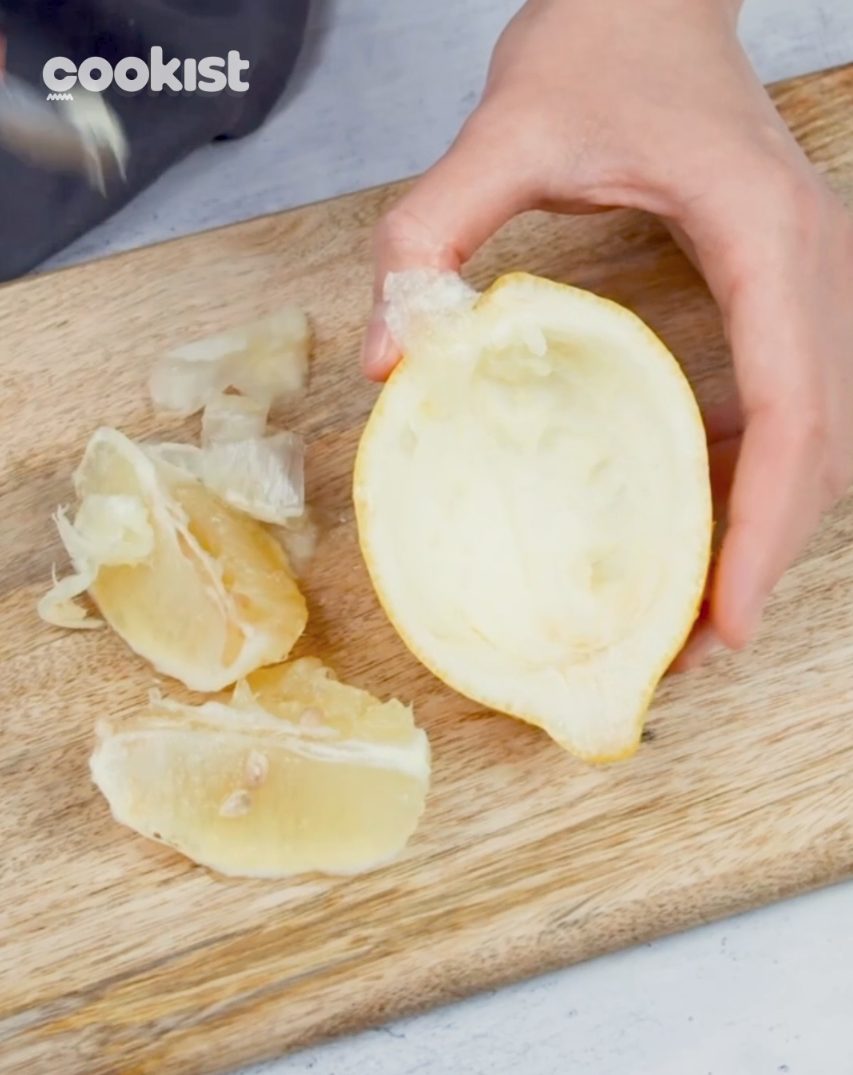;Resize,width=712;)
Remove the pulp from each lemon half, helping yourself with a spoon.
Remove the pulp from each lemon half, helping yourself with a spoon.
;Resize,width=712;)
Squeeze the pulp to get at least 30ml of lemon juice.
Squeeze the pulp to get at least 30ml of lemon juice.
;Resize,width=712;)
In a pot heat up the cream with sugar, vanilla extract and the lemon zest. Mix well and cook for about 2-3- minutes.
In a pot heat up the cream with sugar, vanilla extract and the lemon zest. Mix well and cook for about 2-3- minutes.
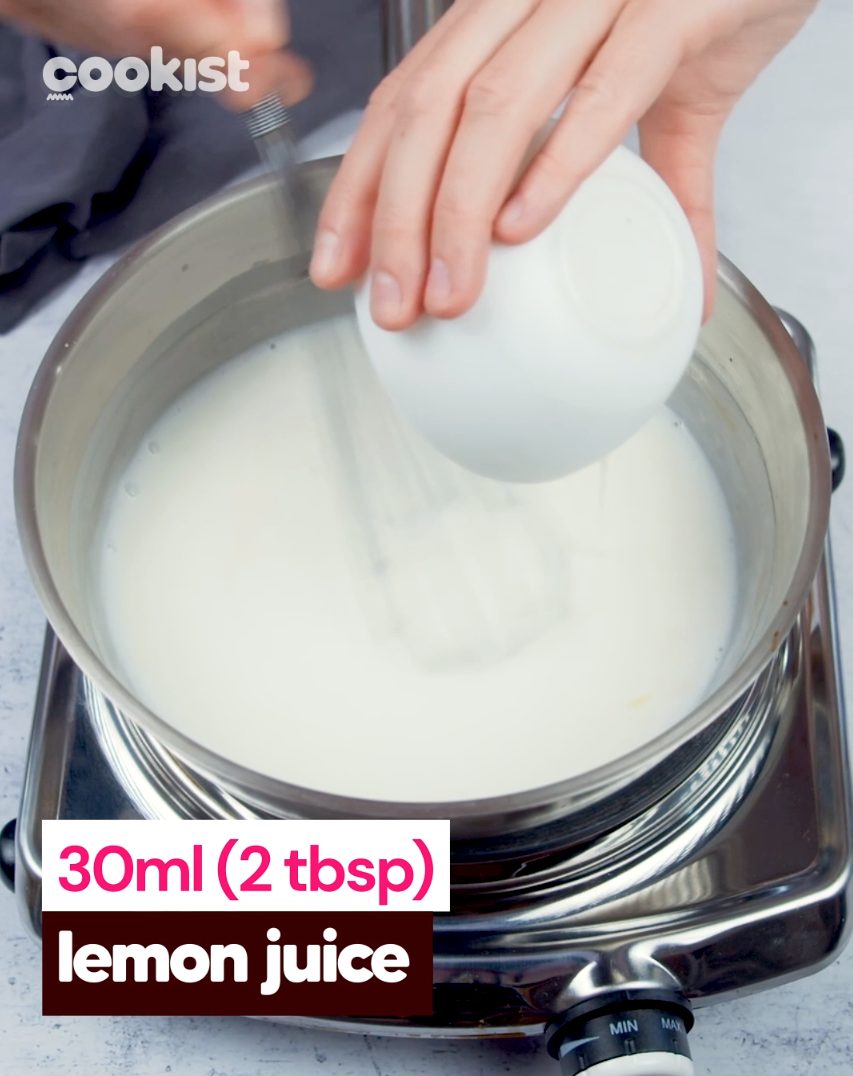;Resize,width=712;)
Take the cream away from the heat and add the lemon juice, continuing to mix with the whisk, until the cream has started to thicken.
Take the cream away from the heat and add the lemon juice, continuing to mix with the whisk, until the cream has started to thicken.
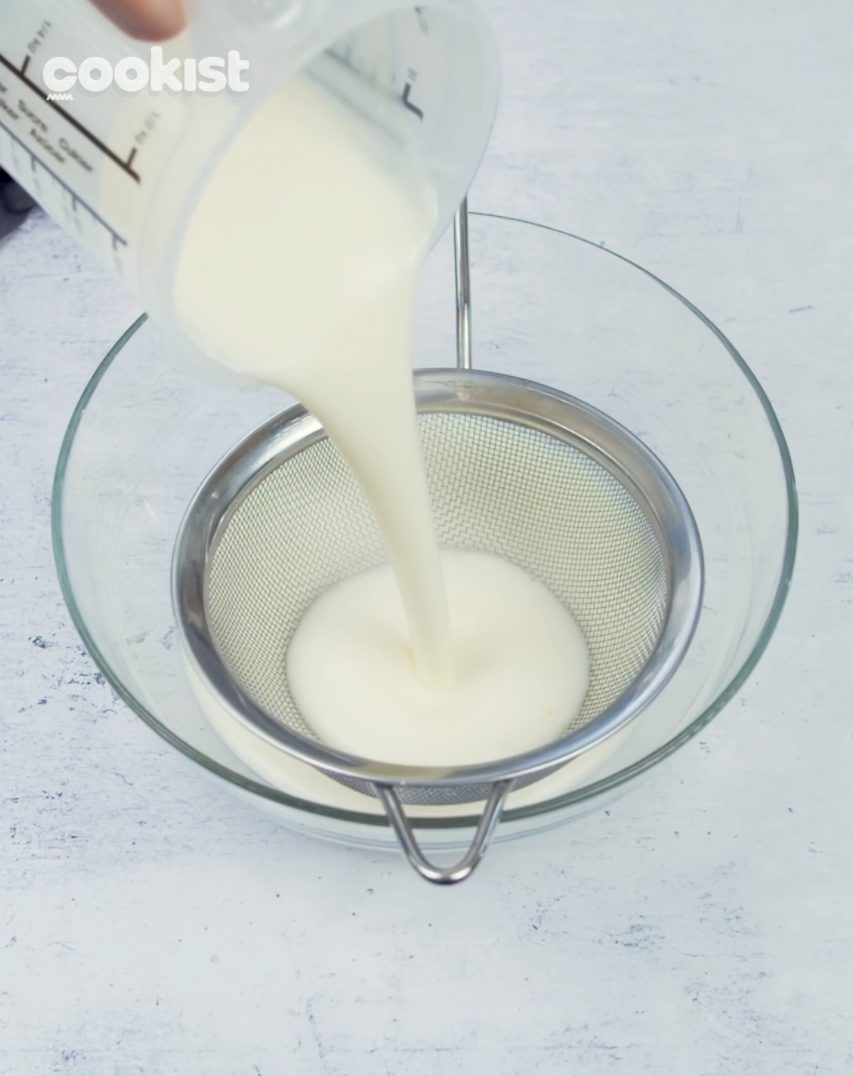;Resize,width=712;)
Strain the cream with a sieve to get rid of the lemon zest.
Strain the cream with a sieve to get rid of the lemon zest.
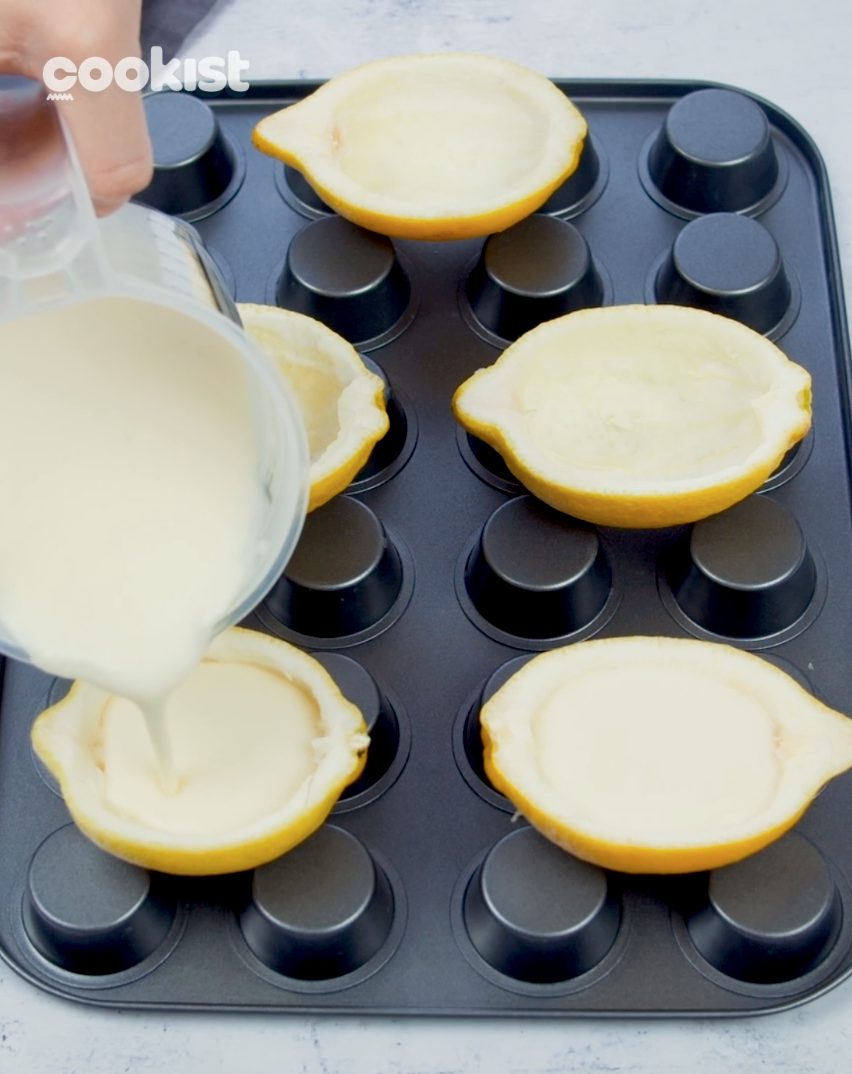;Resize,width=712;)
Pour the lemon posset into each emptied lemon and transfer to the fridge, letting it set for at least 3 hours.
Pour the lemon posset into each emptied lemon and transfer to the fridge, letting it set for at least 3 hours.
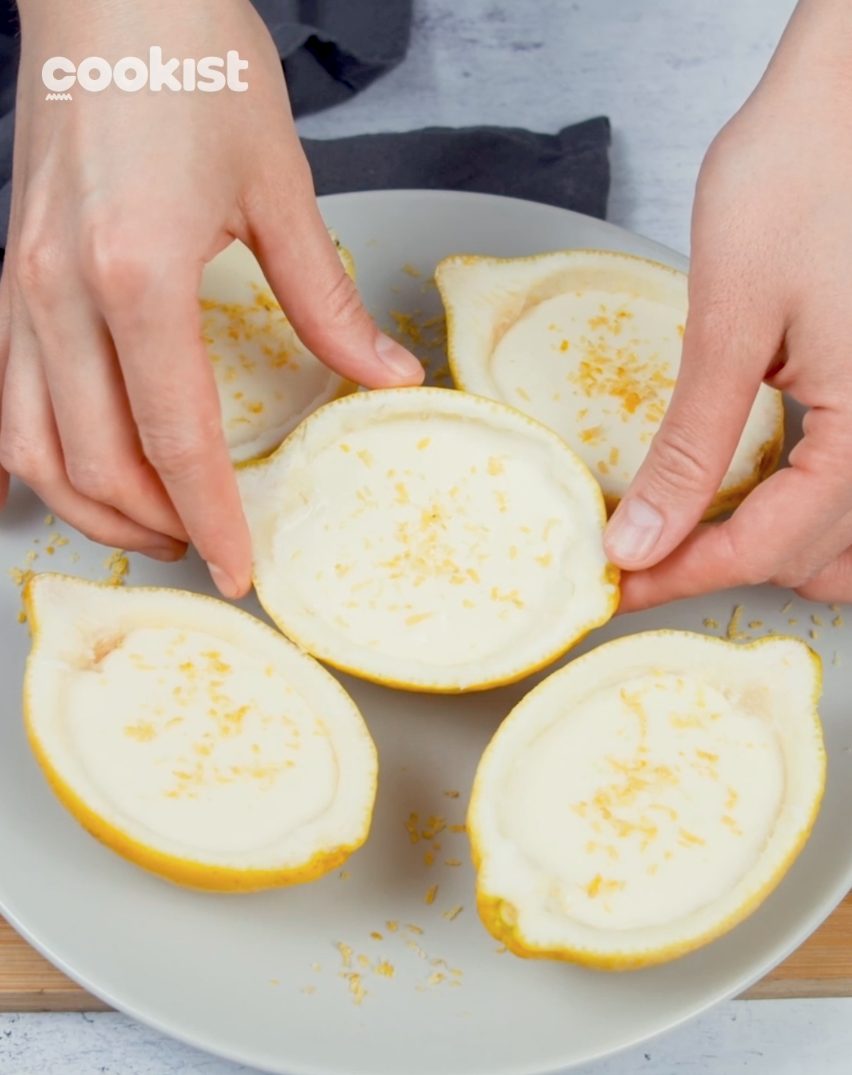;Resize,width=712;)
Once the 3 hours are up, decorate the lemon posset with freshly grated lemon zest and serve while they're still fresh. Enjoy!
Once the 3 hours are up, decorate the lemon posset with freshly grated lemon zest and serve while they're still fresh. Enjoy!
;Resize,width=767;)
;Resize,width=712;)


